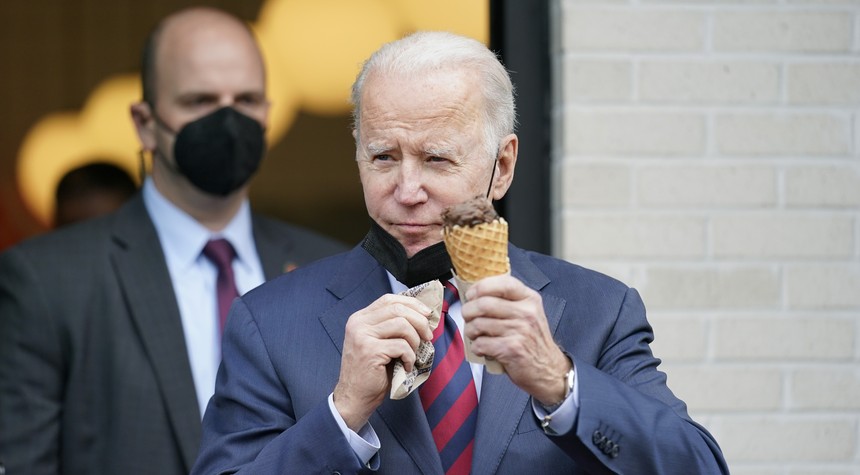No longer able to control the media narrative about Rodney Joffe’s role in peddling the Alfa Bank hoax to the FBI and CIA, his attorneys now seek to silence Special Counsel John Durham. That revelation came from a brief docket entry in a federal district court earlier this week documenting a sealed motion to intervene that Joffe’s lawyers had filed in the criminal case against Michael Sussman, in which they asked for references to “Tech Executive-1” to be expunged from the court filings.
The special counsel’s office indicted Sussmann on September 16, 2021, charging the former Clinton campaign lawyer with one count of lying to FBI General Counsel James Baker when Sussmann provided Baker information purporting to show a secret communication channel between the Trump organization and the Russian-based Alfa Bank. Specifically, the indictment charged that “Sussmann lied about the capacity in which he was providing the allegations to the FBI,” with Sussmann falsely stating “he was not doing his work on the aforementioned allegations ‘for any client.’”
According to the indictment, Sussmann was acting “on behalf of specific clients, namely, (i) a U.S. technology industry executive (‘Tech Executive-1’) at a U.S. Internet company (‘Internet Company-1’), and (ii) the Hillary Clinton Presidential Campaign (the ‘Clinton Campaign’).”
At no point in the indictment, or in later court filings, did Durham name Joffe as Tech Executive-1, or even for that matter name the “U.S. Internet company” at which Joffe worked. Nonetheless, in a transparent attempt to frame the narrative about his role in pushing the Alfa Bank hoax, Joffe’s attorney confirmed that his client was “Tech Executive-1” in an interview with The New York Times.
The New York Times Helps Both Ways
The Times’ chief Clinton spinner, Charlie Savage, along with Adam Goldman, then provided Joffe’s legal team a PR assist in the September 30, 2021 article, “Trump Server Mystery Produces Fresh Conflict.” With a subhead proclaiming that internet researchers were pushing back on suggestions in the Sussman indictment that they did not believe their own Alfa Bank research, the Times article quoted Joffe’s attorney, Steven A. Tyrrell, as he framed his client as merely a concerned tech expert.
“His client had a duty to share the information with the F.B.I.,” the Times reported Tyrrell as stating. Savage and Goldman then aided that take by noting that Joffe in 2013 “received the F.B.I. Director’s Award for helping crack a cybercrime case, and retired this month from Neustar, another information services company.”
In addition to Joffe’s attorneys outing him in the Times article, attorneys for Joffe’s colleagues in the Alfa Bank “research” all went public on their clients’ behalf too. “The indictment’s ‘Originator-1’is April Lorenzen, chief data scientist at the information services firm Zetalytics,” her attorney Michael J. Connolly confirmed. And “the indictment’s ‘Researcher-1’ is another computer scientist at Georgia Tech, Manos Antonakakis,” with “Researcher-2” confirmed as David Dagon by his lawyer.
The Times article then proceeded to push the narrative that the researchers all stood by the Alfa Bank theory, with Joffe’s attorney claiming their research “culminated in the well-supported conclusions that were ultimately delivered to the F.B.I.” Jody Westby and Mark Rasch, lawyers for Dagon, told the Times that “the Alfa Bank results ‘have been validated and are reproducible. The findings of the researchers were true then and remain true today; reports that these findings were innocuous or a hoax are simply wrong.”
Mark E. Schamel, the lawyer for the third researcher, Antonakakis, told the Times “his client had provided ‘feedback on an early draft of data that was cause for additional investigation.’” Schamel added, according to the Time, that “their hypothesis” “to this day, remains a plausible working theory.”
PR Strategy Backfires
Confirming his identity to the Times and then going on the offensive likely seemed a strong strategy to Joffe’s attorney, but once lawyers confirmed his identity, and those of Dagon, Antonakakis, and Lorenzen, journalists could conduct their own research, rather than merely serving as scribes to the self-interested lawyers.
That’s complicated matters because at times Joffe communicated with the researchers via email at Dagon and Antonakakis’ Georgia Tech addresses, and Georgia law takes a very favorable view to transparency via its Right to Know law. Various Right to Know requests have revealed several details at odds with the preferred narrative.
For instance, while Antonakakis’ lawyer told Time the Alfa Bank “hypothesis” “to this day, remains a plausible working theory,” emails obtained by a Right to Know request show “Researcher 1,” as Antonakakis called himself in the email, “never supported the article.”
The Federalist asked Antonakakis’ attorney how he could reconcile his statement to the Times that the hypothesis of the white paper “that there are hidden communications between Trump and Alfa Bank” “to this day, remains a plausible working theory” with Antonakakis’ separate private statement that he “never supported the article.” His attorney did not respond to the request for clarification.
Another email from Antonakakis from August 20, 2016 to Lorenzen, with Joffe copied, had the Georgia Tech researcher saying “the conclusion here is that there is no conclusion.” Later that day Joffe would respond, “fuck <sigh>” in an email to Antonakakis concerning the first analysis, a seeming reference to the Alfa research given that Lorenzen and Dagon were both copied on the email.
A Right to Know request also revealed that Antonakakis’ attorney viewed Joffe’s “‘fuck’ email response” as “indicating that the preliminary analysis did not produce a definite answer,” but he claimed that doesn’t mean communications didn’t occur.
When Things Are Good, Go To NYT. When Bad, Sue
In addition to these emails, others provided in response to a Right to Know request to Georgia Tech document anti-Trump vitriol that also doesn’t serve Joffe’s PR push. Such growing negative attention, coupled with the special counsel’s continued use of legal filings in the Sussmann case to detail how the Alfa Bank hoax (and the related Russian cell phone canard) went down, provide a backdrop to Joffe’s motion that seeks to force Durham to remove references to Tech Executive-1 in past (and likely future) court filings.
Although Joffe’s motion is sealed, the docket entry notes he presents a constitutional claim. That constitutional claim is likely premised on the due process clause of the Constitution, as courts have found due process violations when the government names an unindicted individual in an indictment or later court filings.
“The fundamental requirement of due process is the opportunity to be heard ‘at a meaningful time and in a meaningful manner,” precedent teaches. Yet a named, but unindicted, individual “is not afforded a forum in which he can attempt to vindicate himself.” Expungement of the individual’s name is appropriate in those circumstances, absent an important governmental interest to identifying the individual.
Joffe’s Attorney Named Him Publicly First
The problem for Joffe, however, is that the government did not name him. To the contrary, the special counsel’s office complied with Department of Justice guidelines that provide that “federal prosecutors should remain sensitive to the privacy and reputation interests of uncharged third-parties,” and neither name them or provide an “unnecessarily-specific description” of the individual.
For instance, the guidelines explain, a third party can be referred to generically in most cases such as “a Member of Congress,” as opposed to “Senator X.” And uncharged third parties can be referred to as “an individual.”
In this case, Durham’s team used generic descriptions and neither named Joffe nor provided an “unnecessarily-specific description.” Also, it was not Durham who outed Joffe, but his attorney when he confirmed Joffe’s identity as Tech Executive-1 to The New York Times as part of an apparent PR move.
While it is true that by the time Joffe’s attorney confirmed his identity it was widely understood that Joffe was Tech Executive-1, that belief came not from Durham’s indictment but from internet sleuths who had been following the Alfa Bank civil lawsuit. In fact, one Twitter investigator who goes by Fool Nelson, along with assists from another using the moniker Walkafyre, identified Joffe, Dagon, and Lorenzen as responsible for the Alfa Bank research even before the indictment dropped.
Because the special counsel’s office did not identify Joffe, either by name or in all but name, Durham has nothing to answer for. Whether the court will agree, however, is another question. The court may believe that now that Joffe’s identity is known, future filings must omit any reference to Tech Executive-1, or maybe even be filed under seal.
The latter solution, however, raises other constitutional concerns, namely the First Amendment right to access to criminal court proceedings, which Durham’s team will likely stress in its response to Joffe’s motion. That response is due today, but given the court ordered the special counsel’s office to file it under seal, we will be without further insights until the court issues its decision.










 What we are witnessing now is not as much attached to the Ukraine crisis, as it is the continued ripple effects in that same supply chain.
What we are witnessing now is not as much attached to the Ukraine crisis, as it is the continued ripple effects in that same supply chain.